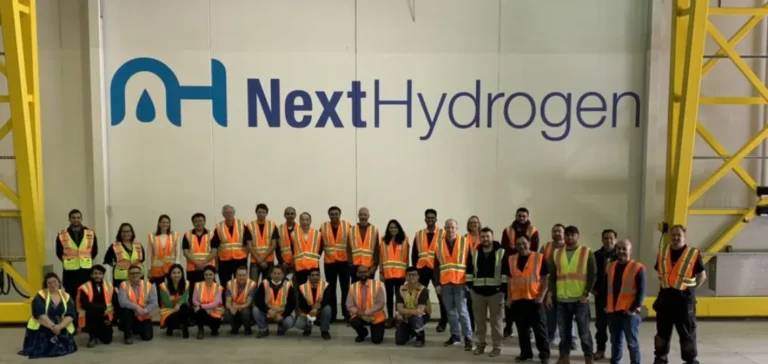Next Hydrogen Solutions Inc., a Canadian company specializing in electrolyzers, released its financial results for the second quarter of 2025, showing a contraction in revenue and a reduced net loss. For the first six months of the year, revenue reached $0.6 million, down from $1.1 million over the same period in the previous fiscal year. The net loss amounted to $5.9 million, compared to $7.3 million a year earlier. Available cash stood at $1.8 million as of June 30, 2025, having declined by half since December 2024.
Targeted financing to stabilize liquidity
In response to constrained liquidity, the company activated several financing levers during the quarter. In July 2025, an unsecured loan of $0.5 million was granted by certain directors and officers, in order to maintain operations and retain skilled personnel. This loan complements a $5 million credit facility secured in April 2025 from Export Development Canada (EDC), of which $4 million has already been drawn to fund scale-up efforts and general corporate needs.
In parallel, the company also secured funding in December 2024 through a private placement of unsecured convertible debentures totaling $2.7 million. These resources are intended to support the company’s technological roadmap while preparing for potential future fundraising rounds.
Technological progress and industrial validation
From a technical perspective, Next Hydrogen reached a milestone in July 2025 by commissioning a large-scale electrolyzer at a logistics center, introduced as Ontario’s largest onsite hydrogen production and dispensing station. The unit is designed to produce up to 650 kilograms of hydrogen per day, serving fuel cell-powered forklifts.
The electrolyzer’s performance is supported by over 40,000 hours of test platform data, contributing to improvements in per-cell hydrogen output. In October 2024, the company completed durability tests on its GEN2 electrolysis technology, achieving energy efficiency metrics exceeding the U.S. Department of Energy’s published technical targets.
Certifications and entry into the aerospace sector
In March 2025, Next Hydrogen obtained ISO 9001:2015 and ISO 45001:2018 certifications for its industrial site in Mississauga. These standards cover quality processes, occupational health and safety management, and supplier selection criteria. This recognition comes as the company prepares to meet increasing industrial demand.
Finally, in November 2024, the company announced a collaboration with Pratt & Whitney on a project to test hydrogen use in aircraft engines. This program, partially supported by Canada’s Initiative for Sustainable Aviation Technology (INSAT), aims to validate the use of electrolysis within the alternative aviation fuel supply chain.






















